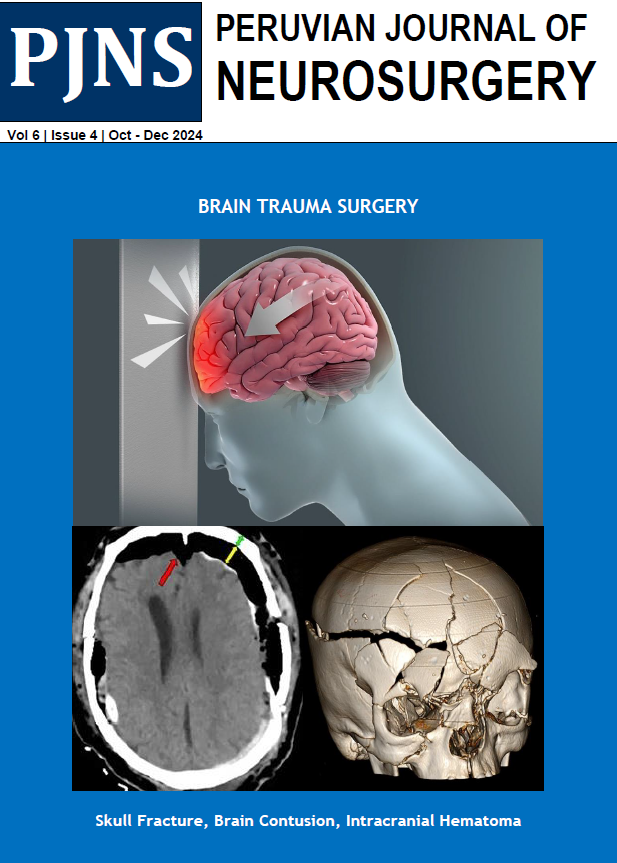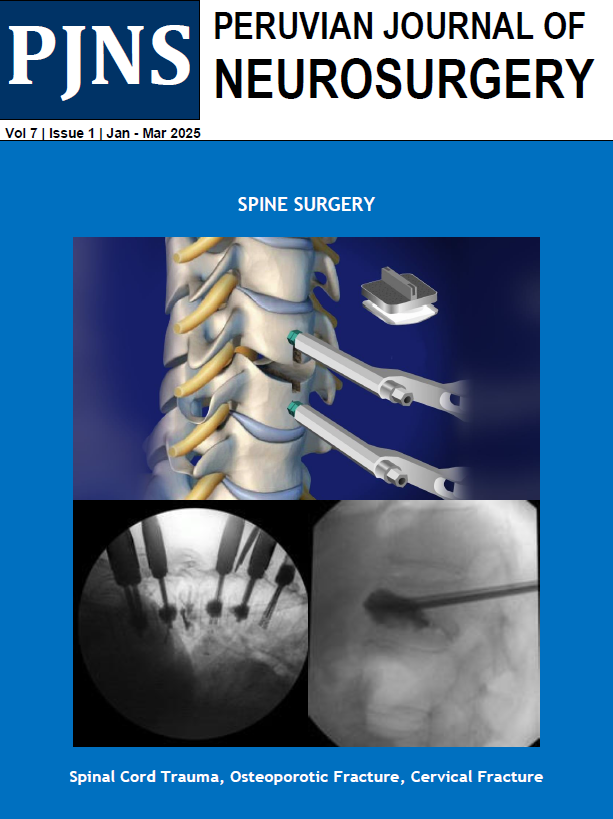Introduction: Neuroenteric cysts (NECs) are rare, congenital, and benign lesions that result from persistent or abnormal communication between the neuroectoderm, notochord, and endoderm. They occur primarily in pediatric and young adult patients and are associated with other vertebral-medullary, gastrointestinal, and respiratory malformations. They are intradural, extramedullary lesions, with intramedullary presentation being rare. We present the case of a patient with a recurrent intramedullary intraspinal Neuroenteric cyst at the D4-D5 level.
Clinical case: A 39-year-old male patient with a history of spinal surgery for intramedullary cysts on two occasions presented with a 1-month history of moderate-intensity stabbing pain in the thoracic region radiating to the anterior region of dermatome T4, associated with predominantly left-sided paraparesis and bladder and rectal sphincter disturbances. Magnetic resonance imaging (MRI) of the cervical spine showed a hypointense cystic tumor on T1 and hyperintense on T2 at the T4-T5 level, consistent with an intramedullary Neuroenteric cyst. On examination, the patient was awake, with a Glasgow Coma Scale of 15, isochoric, photoreactive pupils, predominantly left-sided paraparesis (LLL 3/5, RLI 4/5), sensory level T5, and left patellar hyperreflexia. A T4 and T5 laminectomy was performed with evacuation of the intramedullary cyst and placement of a cysto-subarachnoid shunt, without complications. The patient's postoperative clinical course was favorable, showing recovery of motor deficits.
Conclusion: Surgical resection is the treatment of choice for Neuroenteric cysts. The goal should be total resection due to the high recurrence rate. A follow-up MRI is recommended for subtotal resections.
Keywords: Cysts, Neural Tube Defects, Neural Plate, Laminectomy. (Source: MeSH NLM)
Introducción: Los quistes neuroentéricos (QNE) son lesiones raras, congénitas y benignas, causadas por la comunicación persistente o anormal entre el neuroectodermo, la notocorda y el endodermo. Se presentan principalmente en pacientes pediátricos y adultos jóvenes, asociados a otras malformaciones vertebromedulares, gastrointestinales y respiratorias. Son lesiones intradurales extramedulares, siendo excepcional su presentación intramedular. Se presenta el caso de un paciente con quiste neuroentérico intramedular intrarraquídeo recidivado a nivel de D4-D5.
Caso clínico: Paciente varón de 39 años, con antecedente de cirugía de columna dorsal por quiste intramedular en dos oportunidades con cuadro clínico de 1 mes de evolución caracterizado por dolor punzante de intensidad moderada a nivel de la región torácica que se irradiaba a región anterior de dermatoma T4, asociado a paraparesia a predominio izquierdo y trastorno esfinteriano vesical y rectal. Una resonancia magnética nuclear (RMN) de columna cérvico dorsal mostró una tumoración quística hipointensa en T1 e hiperintensa en T2 a nivel D4-D5 compatible con quiste neuroentérico intramedular intrarraquídeo. Al examen: Despierto, Escala de Glasgow: 15, pupilas isocóricas, fotorreactivas, paraparesia a predominio izquierdo (MII 3/5, MID 4/5), nivel sensitivo D5, hiperreflexia patelar izquierda. Se realizó una laminectomía D4 y D5 con evacuación de quiste intramedular y colocación de derivación cisto-subaracnoidea, sin presentar complicaciones. Su evolución clínica postoperatoria fue favorable, mostrando recuperación de déficit motor.
Conclusión: La resección quirúrgica es el tratamiento de elección del quiste neuroentérico. El objetivo debe ser la resección total debido a la alta tasa de recurrencia. El seguimiento con RMN es recomendado en resecciones subtotales.
Palabras Clave: Quistes, Defectos del Tubo Neural, Placa Neural, Laminectomía. (Fuente: DeCS Bireme)


